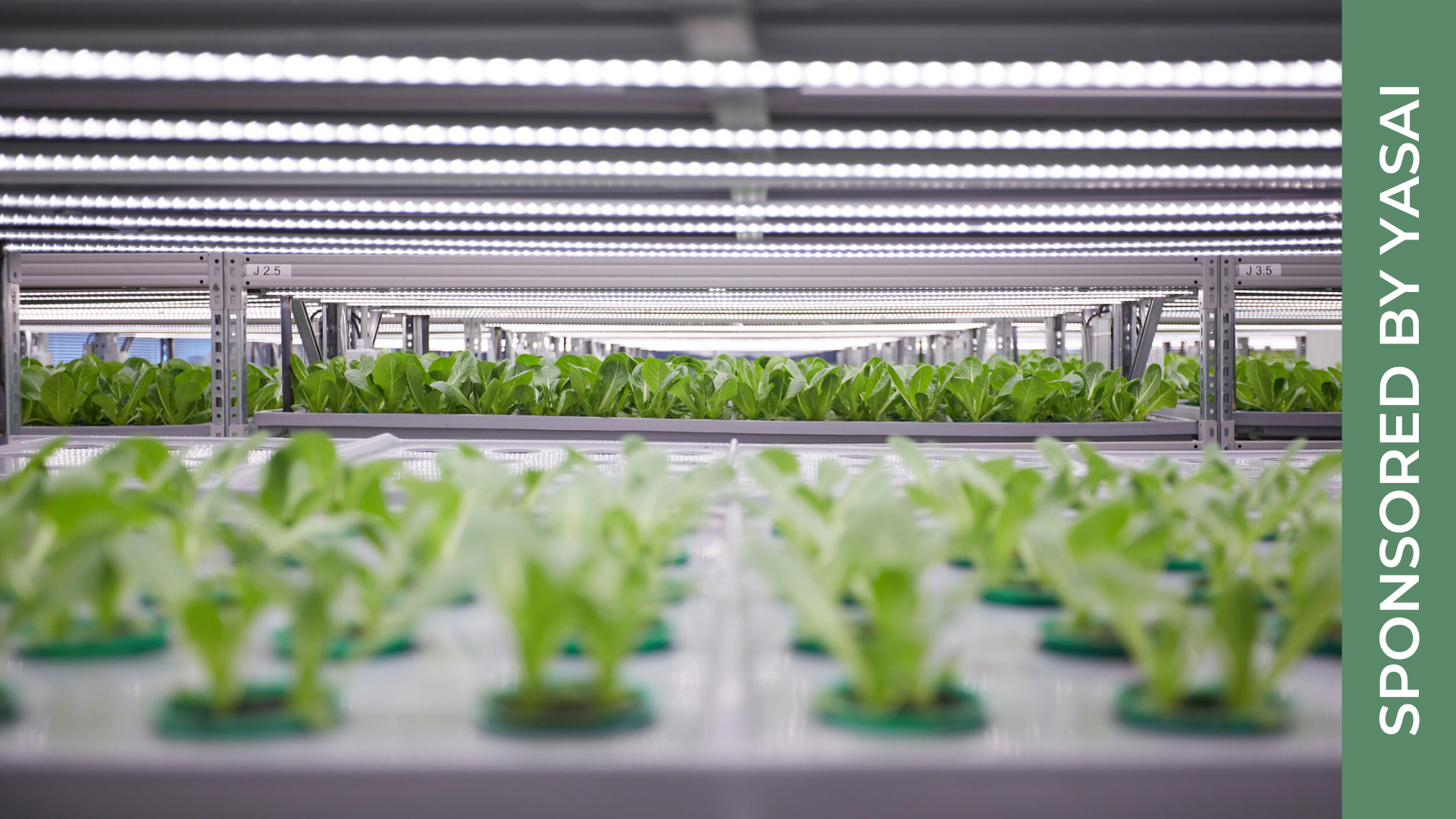May 25, 2021
New Funding Opportunities To Scale-Up Vertical Farming
.png)
Image sourced from YASAI
This is the third post of a three-part series in partnership with YASAI. Read the first post on “The Largest Vertical Farm In The World In One Of The Smallest Countries,” and the second post on “Yasai - Rethinking Vertical Farming As A Service.”
“It’s crucial for vertical farming to scale up given the infrastructural costs.” – Mark E. Zahran, Co-Founder & CEO of YASAI
After designing the largest vertical farm in the world, the YASAI team went back to the drawing board to design an even bigger farm. Their new vertical farming module is easily scalable, and offers a higher degree of automation, all for an affordable price. Mark says that “this module serves as the crucial LEGO-piece to go and grow big!”
But, why build a bigger farm? The answer is economies of scale.
With the high cost of vertical farming technology and infrastructure, you need to build bigger to truly reap the rewards from your farm. The biggest challenge with selling low-margin products is finding the balance between selling at low-cost and making profit.
Mark highlights that as an entrepreneur, you need high volume to be profitable, “to keep costs down, and to continue attracting cost-conscious customers.” A bigger vertical farm will allow you to achieve economies of scale, enabling you to “produce low-margin products in a profitable manner.”
"We want to contribute to a healthy planet by growing healthy plants for healthy people." – Mark E. Zahran, Co-Founder & CEO of YASAI
Similarly to the pilot farm, Mark shares that this 10X-Vertical Farm (a vertical farm that is planned to be at least 10 times larger than YASAI’s pilot farm) will continue to contribute to a healthy planet by “providing a higher volume and thus more nutritional support for the Swiss population for an affordable price.” The new farm will continue to reuse the cities’ wastes as resources to promote plant growth, and fuel circularity within the food ecosystem.
In their mission to “connect different technologies in the field, optimise costs and reduce waste, while producing local & fresh food for city dwellers,” the Yasai team is working to surpass the pilot farm’s extent of impact. They’re doing this by integrating more automation with partnerships with Logiqs, iFarm, and Green Simplicity.
To further their impact, this combination of increased automation and scaling up the vertical farm will allow for more synergies to be made possible. Mark says that “the scale will allow for more biowaste to be converted into energy to be used throughout the vertical farm, and to create other synergies such as reusing the heat waste produced by the farm for other neighbouring spaces or activities.”
With this circular and ambitious approach to scaling vertical farming, the Yasai team is ushering in a new decade of innovation and sustainability in agriculture.
But, how is Yasai funding this enormous operation?
“Venture Capital alone will not be able to scale-up the Vertical Farming industry. We need to build infrastructure for the 21st century. As a result, we need alternative financing methods.” – Mark E. Zahran, Co-Founder & CEO of YASAI
Through an interim workshop with students from the University of St. Gallen in Switzerland, Yasai was able to do a competitive analysis on 18 companies in the European and American markets. Amongst other things, the analysis focused on the business models of these companies, what made them profitable, and what their funding sources were.
After compiling their research on the existing funding landscape of vertical farming companies, the Yasai team, in collaboration with the student group from the University of St. Gallen, realized that “there isn’t as much diversity” in funding sources.
According to their report, only 6.5% of Kalera’s funding was sourced from loans, Dream Greens raised $595M via a SPAC, Gotham Greens raised $125M in their Series D round, Square Roots raised $25M from venture capitalists, and Bowery Farming raised $177M from venture capitalists. The problem here is that vertical farming is a lot more long-term an investment than most venture capitalists (VCs) understand and are willing to take on.
“We need to think of vertical farming as a long-term investment.” – Mark E. Zahran, Co-Founder & CEO of YASAI
So, what’s the alternative? OPM. Short for ‘Other People's Money’.
Mark shares that “OPM allows for lots of opportunities because an entrepreneur can source their funding from real estate/infrastructure funds, energy companies, and even traditional farmers that want to upgrade.” This alternative route allows for people to not just buy a stake in the company like VCs. Mark adds that “most VCs are only able to support an operation for 5 to 10 years, so this approach allows for much more long-term thinking.”
Mark adds that “Venture Capital was very successful in starting-up this new industry. However, to scale-up, OPM will be needed. An XL-Vertical Farm can easily cost up to $50 million. If a young company wants to finance such a farm with Venture Capital, extremely high valuations are required to not sell the whole company for just building a single XL farm.”
A quick tip from Mark is to ensure that you’re establishing a strong brand. “Diving into the existing landscape of the most successful vertical farms worldwide, the ones that acquire the most venture capital and funding are the ones that have a strong brand. Having a nice design really matters to investors so it attracts money”. As a result, remember to “have a nice representation of your brand.”



